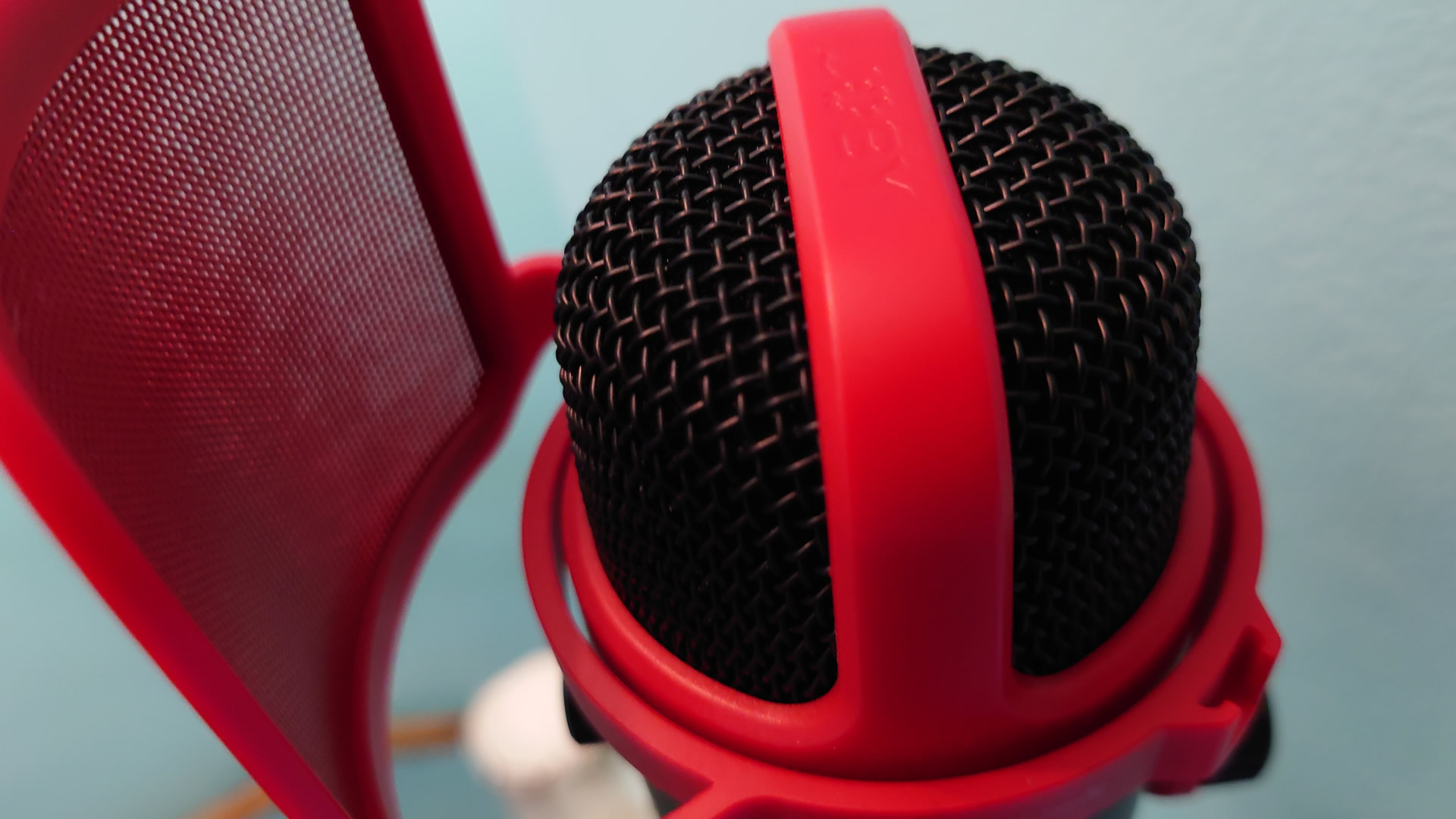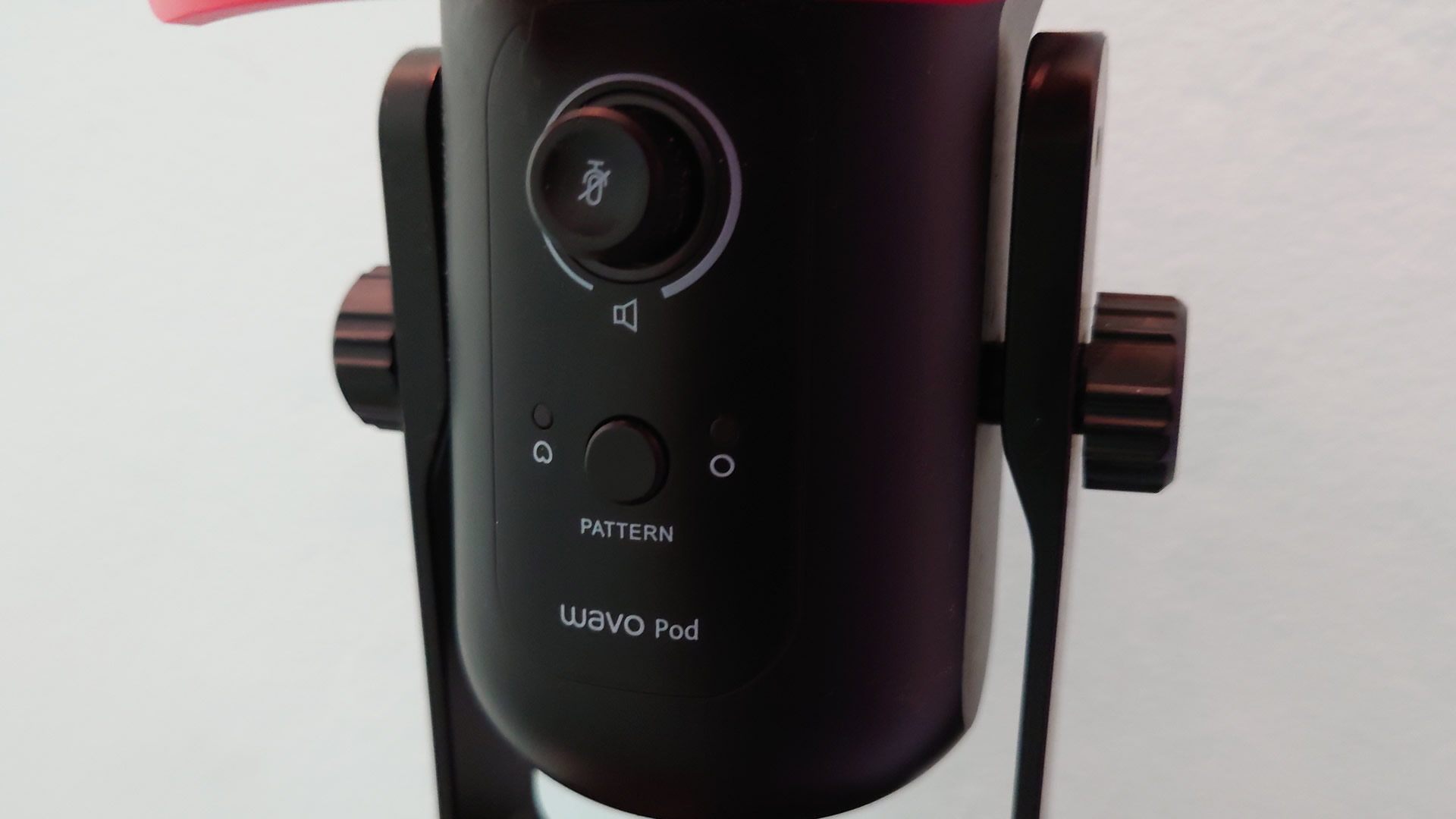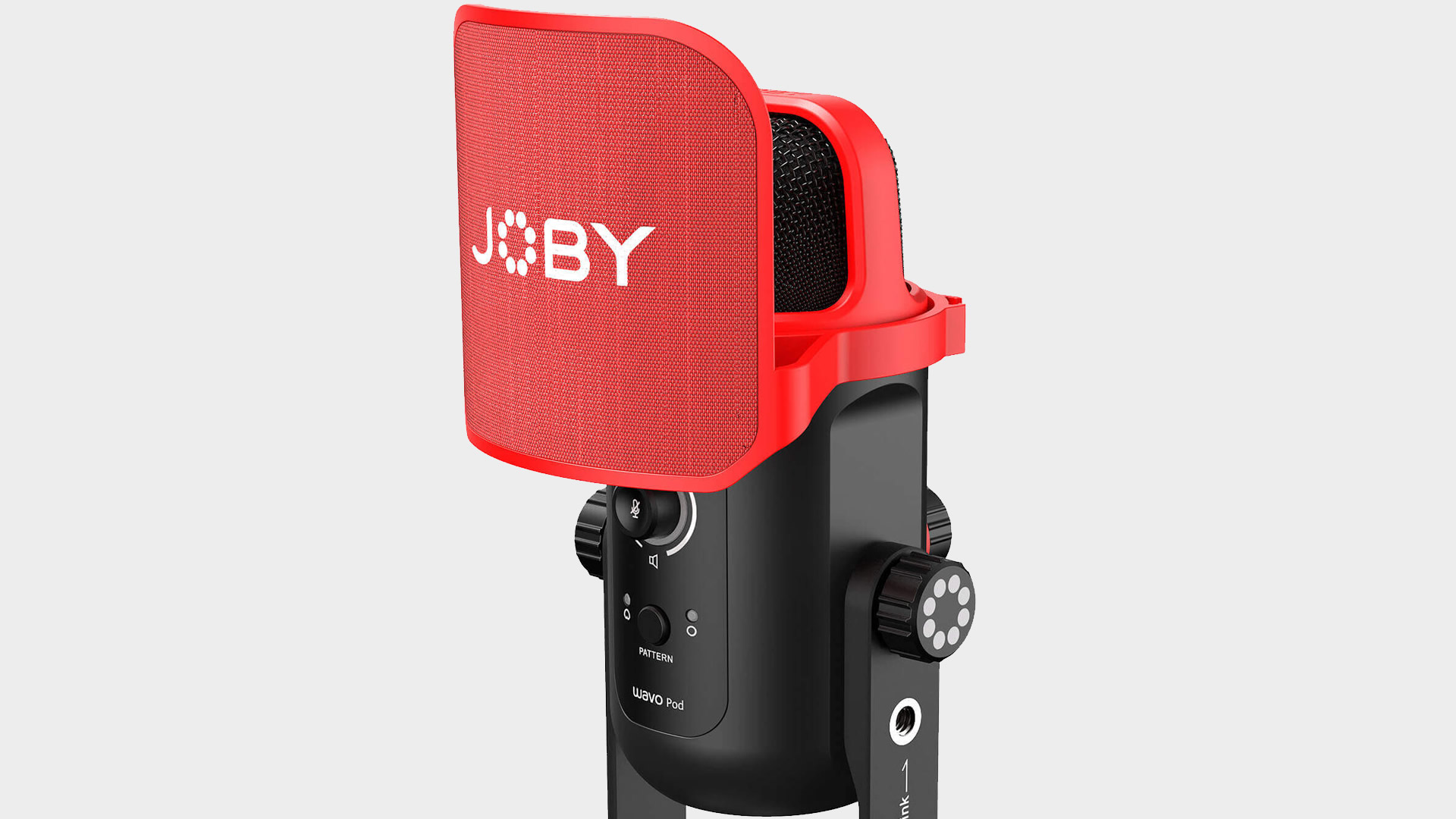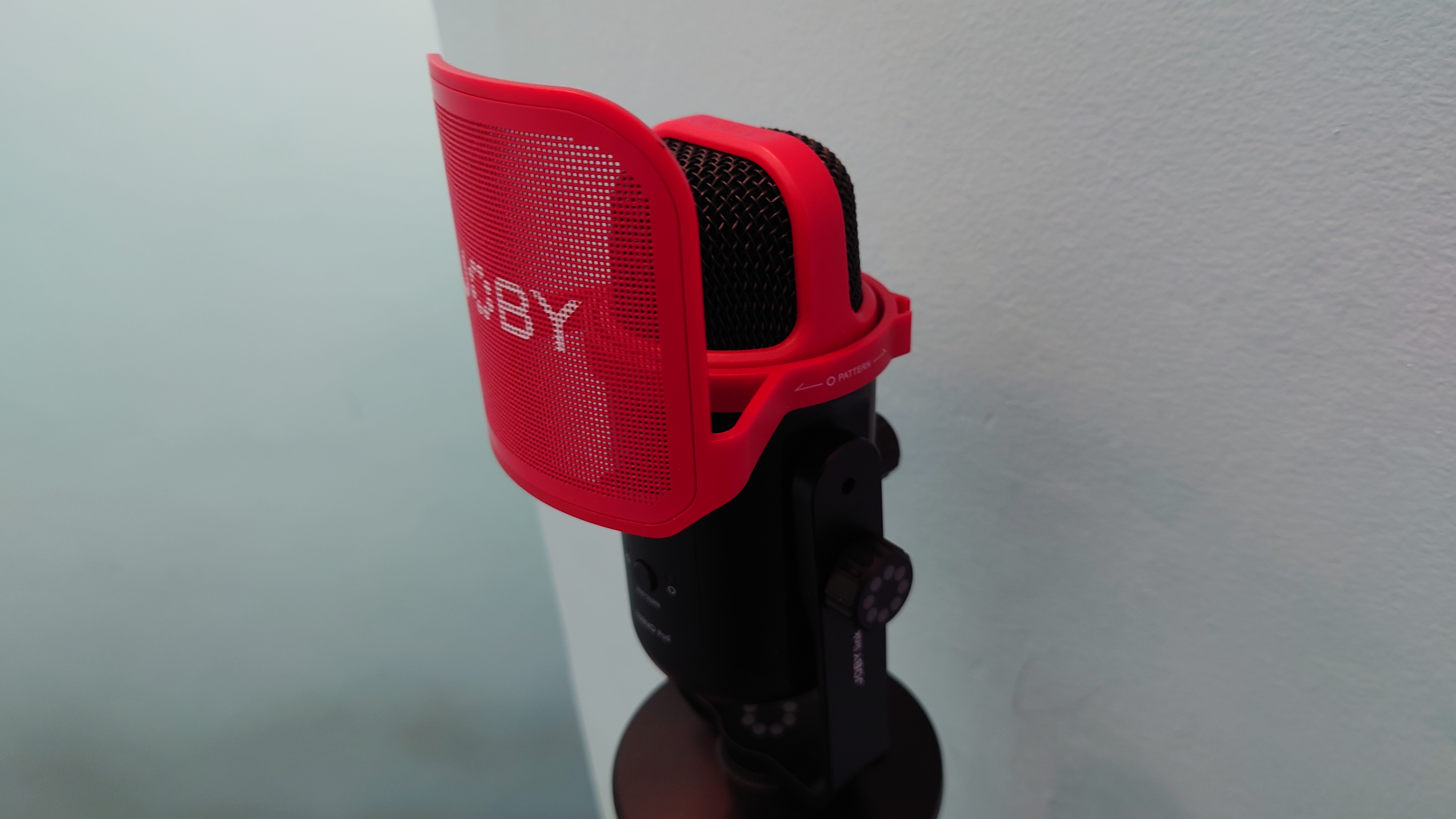GamesRadar+ Verdict
The Joby Wavo POD offers great sound quality and premium features that other more expensive USB microphones from more established brands just aren't offering. Considering the asking price, this microphone is one of the better value streaming options on the market right now.
Pros
- +
Compact design
- +
USB-C connection
- +
Included pop filter
- +
Aggressive price point
- +
Integration with Joby Link
Cons
- -
Lacks premium feel
- -
Less established name brand
Why you can trust GamesRadar+
The Joby Wavo POD is one of the better value propositions as far as an affordable streaming setup is concerned. Priced at just $99 / £89, this USB-powered unit can easily be considered one of the best microphones on the market right now. Although it may lack the name-brand recognition of some of the other greats in the audio space, there's no reason to sleep on this compact but capable Cardioid.
Design and Features
What's immediately noticeable about the Joby Wavo POD over other core USB microphones is its compact size and small footprint. This model is significantly smaller than the likes of the Blue Snowball or Blue Yeti, despite the microphone itself being the same size. As someone with a cluttered desk at the best of times, I can certainly appreciate a microphone that only takes up the space that it needs to.
I'm personally a huge fan of the color scheme that the Joby Wavo POD is rocking, with its slick all-black design and prominent included red pop filter, too. We don't often see affordably priced USB microphones come with this accessory, so it's certainly a point in the unit's favor, too.
You can see the sub-$100 price tag in the construction for the Joby Wavo POD when compared to more premium offerings. This microphone is made of durable plastic from stand to chassis, so you aren't getting a slick metal shell here. That doesn't make this model feel cheap, though, far from it in fact. There's a weight to this unit which means it won't slide around when the pedestal stand is atop a desk or table. I've paid more for cheaper feeling microphones in my time.

Things are no-nonsense when looking over the Joby Wavo POD's controls. You've got everything that you would expect to find, including a monitoring dial that doubles as a mute button when pressed, and a toggle to switch between pickup patterns. You have the choice between your standard Cardioid uni-directional pickup and an option for Omnidirectional depending on your usage.
One of the biggest strengths that the Joby Wavo POD has over its competition is the connectivity method, as this USB microphone plugs into your device of choice through USB-C. We rarely see mics at this price point offering such a power type, instead opting for the older and slower Mini and Micro USB, so this futureproofed touch is definitely a massive plus in my opinion. What's more, it means you can use this device with an iPad without requiring a pricey adapter, too, ideal for any content creator or mobile-minded musician on the go.
If you're someone who has any experience with the wider Joby ecosystem, such as the GripTight and GorillaPod lines, then you'll be thrilled to hear that the Joby Wavo POD is built with existing supports and mounts in mind, too. This means you'll have a fair few options in the near future should you want to take this kit on the road with you.

Performance
I've been constantly impressed by the performance of the Joby Wavo POD microphone. Although this unit isn't going to ever live up to XLR behemoths such as the Rode PodMic or Shure MV7, the overall sound profile with this bit of kit should be commended. There's an accuracy and warmth to the tones produced with both pickup patterns that I haven't quite experienced from some other similarly priced USB models in my time.
In my time with the Joby Wavo POD, I've done everything from track vocals for a record, to late-night streaming sessions with friends, and engaging in work meetings all with very positive results. The included pop filter isn't just there for decoration after all, and it really made all the difference in stopping any clicking, popping, or clipping sounds that can arise from casual conversation. On the technical front, you're going to be outputting a max of 24bit / 48kHz which is certainly in line with what I've seen with other USB models.
The 3.5mm headphone jack used for monitoring is also incredibly useful, and a feature that I wish more USB microphones would implement for those wanting an encompassing feedback solution. There isn't too much control that you have here besides adjusting the volume, but as a built-in extra, it works well enough to recommend considering in daily use.

Should you buy the Joby Wavo POD?
I can heartily recommend the Joby Wavo POD to those who want an affordably priced and easy-to-use USB microphone that's capable enough for streaming and production use. While you're not quite going to get professional broadcast quality here, I think for the aggressive asking price, how good this kit sounds speaks for itself. If you're after a powerful alternative to the big brand names then this one definitely delivers on all fronts.
How we tested the Joby Wavo POD
I've had the Joby Wavo Pod for the past three months and have used it as one of my main microphones in my daily work and leisure time. I have used this microphone when streaming gameplay on several occasions, as well as in work calls, when producing music.
Get up to date on all you need for streaming with the best ring lights, best green screens, and best webcams.

Aleksha McLoughlin served as the Hardware Editor for GamesRadar from June 2021 until August 2022. Her main area of expertise was the PC gaming platform, which comprised buying guides, features, reviews, and news coverage on components and prebuilt machines. She was also responsible for gaming chairs and storage. She now works on a freelance basis while studying to become a university lecturer specializing in English for foreign territories. Prior to joining GamesRadar, she wrote for the likes of Expert Reviews, The Rory Peck Trust, No Clean Singing, Vinyl Chapters, and Tech Spark while also working with the BBC.




